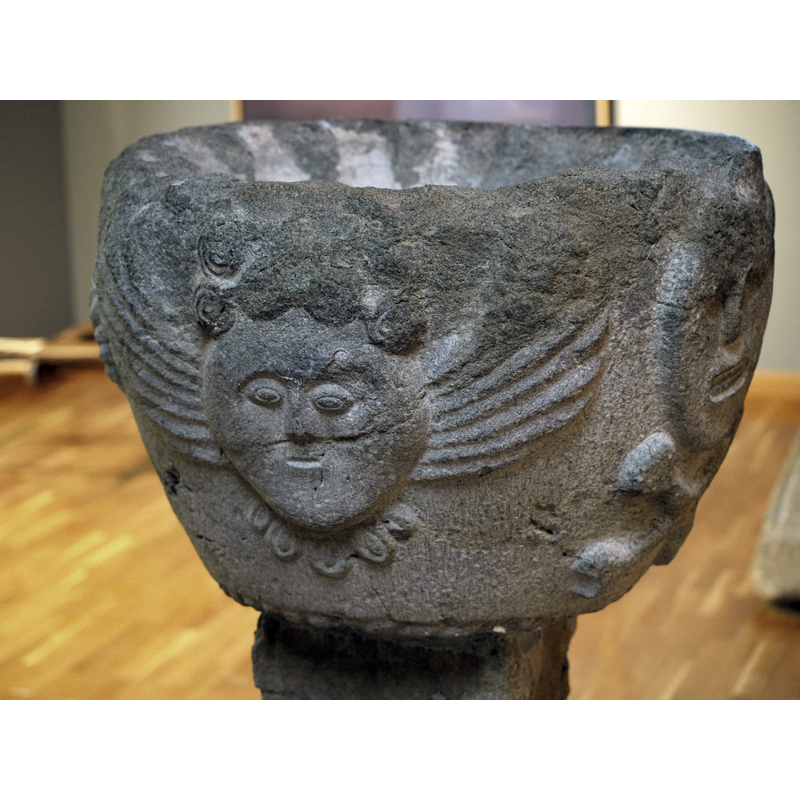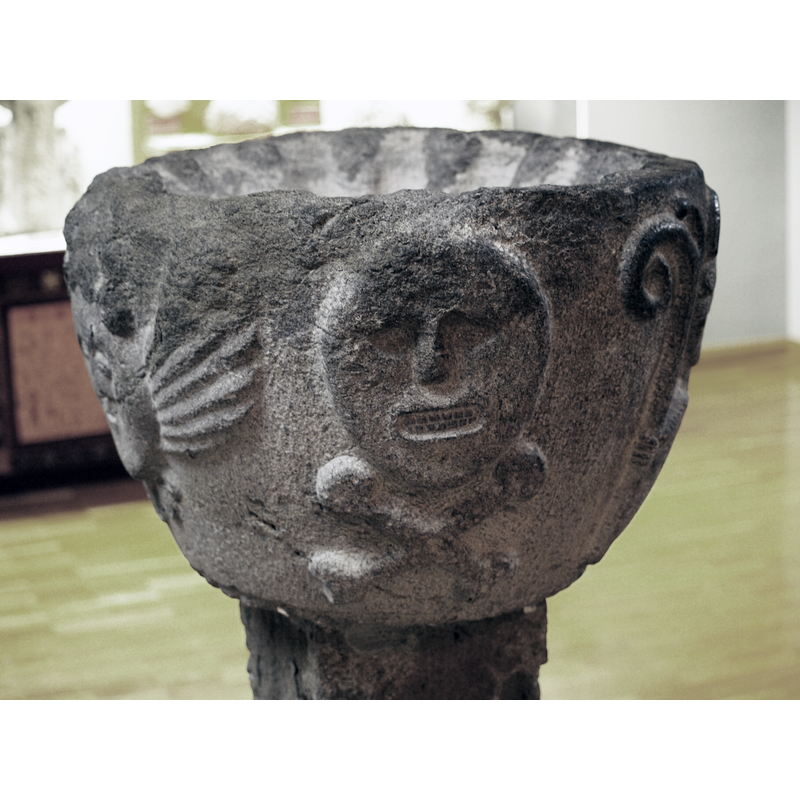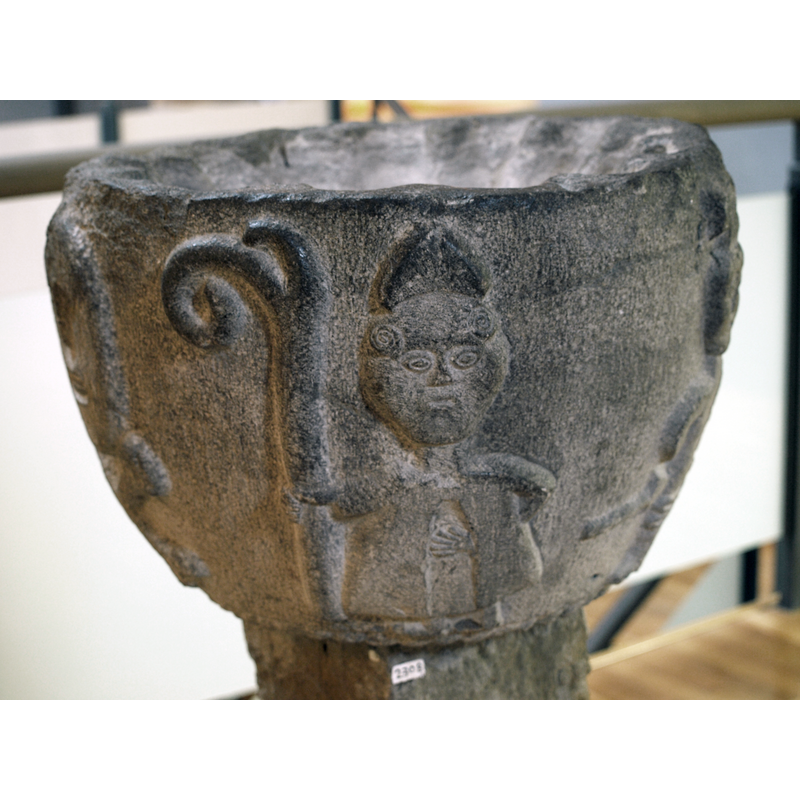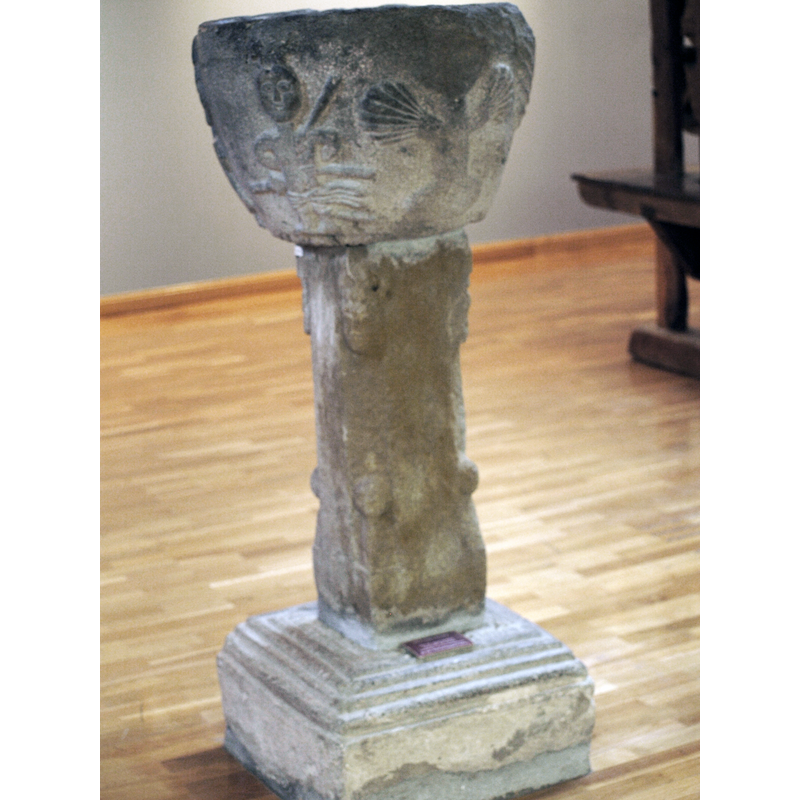Santa Maria de Perula / Santa María de Ayneto / Santa María de Pérula
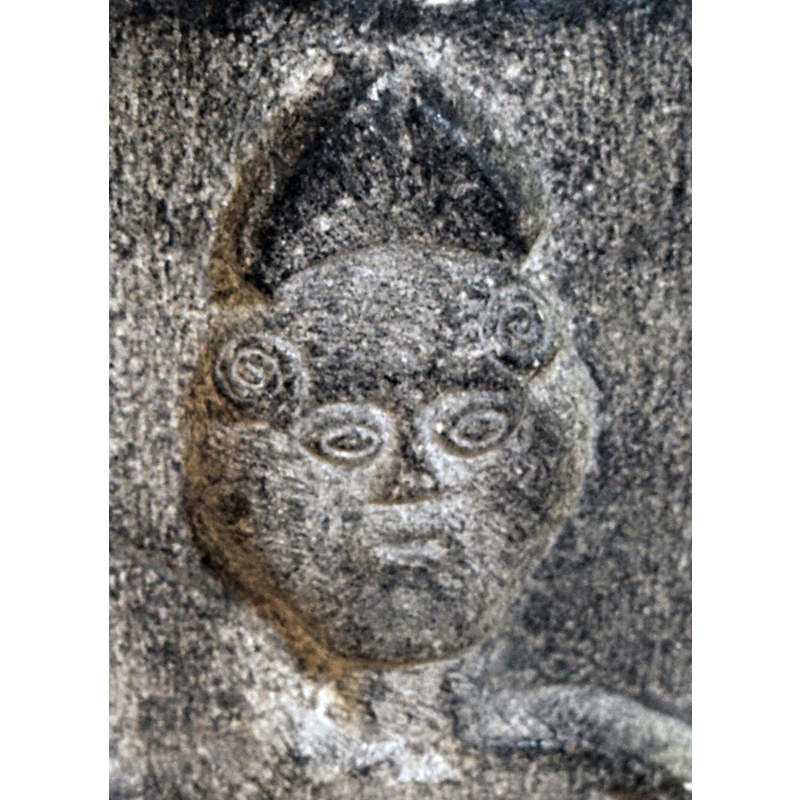
Image copyright © Lola Valderrama, 2010
received via Mikel Unanue with permission to reproduce
Results: 7 records
B01: Apostle or saint - St. Sebastian?
B02: unidentified
B03: angel - cherub?
B04: symbol - skull and bones
B05: cleric - abbot - wearing mitre - holding staff
view of basin - detail
INFORMATION
FontID: 17005PER
Object Type: Stoup?
Museum and Inventory Number: Museo Ángel Orensanz y Artes del Serrablo (Sabiñánigo) / Museo de Sabiñánigo (?)
Church/Chapel: Ermita de la Santísima Virgen [aka Santa María de Pérula]
Church Patron Saints: St. Mary the Virgin
Church Location: Santa María de Pérula, Sabiñánigo, Huesca, España
Country Name: Spain
Location: Huesca, Aragón
Directions to Site: located near, and in the municipality of, Sabiñánigo, 2 km from Ayneto / Aineto; belonged earlier to the municpality of Secorún
Ecclesiastic Region: Diócesis de Jaca
Historical Region: Comarca de Serrablo
Font Location in Church: [in a museum]
Century and Period: 16th - 17th century, Baroque
Cognate Fonts: the font at Nocito (Huesca) may be related, even the work of the same mason
Credit and Acknowledgements: We are grateful to Lola Valderrama, of Amigos del Romanico, for her photographs of this font
Font Notes:
Click to view
An object reported now in the Sabiñánigo museum. and said to be originally from the rural chapel of Santa María de Pérula nearby; it appears to have been a holy-water stoup. It consists of a bucket-shaped basin crudely made and carved with five large motifs [L->R]: standing male figure wearing a loin-cloth and being stabbed (?) by two large arrow-like projectiles, possibly representing St. Sebastian; oddly-shaped motif resembling a vessel of some sort but furnished with two arm-like stensions ending in pilgrim shells; large flat human face with wings and wig-like hair; skull and bones; standing figure with hieratic clothing. mitre and staff, probably meant to be a bishop. The inner well of the basin is carved with concave ribs, again, a very crude work; at the bottom of the basin runs a rope moulding. Although the shape of the vessel and the carving are reminiscent of some of the early-Romanesque works of nearby Pyrenean church fonts, this must be the work of a local mason, perhaps more ambitious than skilled, and of rather a late period, the 16th or 17th century at the earliest. It is not clear whether the pedestal base was the original support of this object; it appears quadrangular and decorated with knob-like motifs.
COORDINATES
Church Latitude & Longitude Decimal: 42.394722, -0.22
Church Latitude & Longitude DMS: 42°23′41″ N, 0°13′12″ W
UTM: 30T 728813 4697348
MEDIUM AND MEASUREMENTS
Material: stone
Font Shape: bucket-shaped (mounted)
Basin Interior Shape: round (foiled)
Basin Exterior Shape: round
Drainage Notes: no lining
Diameter (includes rim): 50 cm* (?)
Notes on Measurements: * [not mesured; suggested by the photographer]

![[cf. Font notes]](/static-50478a99ec6f36a15d6234548c59f63da52304e5/compressed/1101029003_compressed.png)
